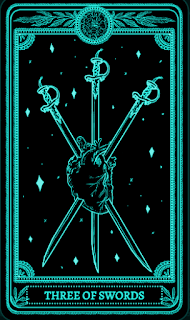Don't know if anyone is in the market, but here is my version of Carcosa done in Hex Kit 2.0. An awesome mapping program that does everything I've always wanted Hexographer to do.
As a bonus, here is a simple map of Hot Springs Island (again, more of a player facing one).
HOLMES ULTRABLUE: A PROSPECTUS FOR COMBAT RULES
HOLMES ULTRABLUE
GOAL: Things that need to matter in combat: weapon choice, range, initiative, morale & maneuvers/environment. Basically trying to increase choice and speed of combat.
Holmes Basic: All weapons do 1d6 damage (this is also found in B/X, but lets take the focus off variable damage- the optional rule in B/X).
Bastionland: Supercharge 5e D&D Combat but scaled to Basic D&D with 10-foot Polemic's notch system thrown in. Notches in weapons decrease dmg by 1, notches in armor decrease AC by 1.
Nat 1: Miss; 1 weapon notch; no dmg (0 dmg)
< AC: Glance; min. dmg, but can't bring below 1 hp (1 dmg)
> AC: Hit; avg. dmg, but can bring below 1 hp (3 dmg)
Nat 20: Crit; 1 armor notch; max dmg (6 dmg)
No-damage options: (to trip, disarm, shove, pull) : Glance is a struggle with a chance of a reversal (contested roll) while Hit is a non-damage effect (trip, disarm, shove, pull).
Basic Initiative: Roll 1d6, highest goes first; ties favor the PCs
Pathfinder 2e: Weapons have traits and "Crit Abilities". Let's stick to stripped down Holmes Basic weapons. Don't have a good idea about what to list as Crit abilities.
Sword- s- parry
Bow- p- ranged; forgo movement to get 2nd attack
Mace- b- +1 to-hit vs. AC > 15
Axe- s- +1 dmg vs AC < 15
Spear- p- reach
B/X Basic: What is in your off-hand?
Two-weapon fighting: +1 to-hit (if two different weapons, odd roll is one, even roll is the other)
Two-handed weapon: +1 to dmg
Shield: +1 to AC
Torch: Light, Crit sets the target on fire on a 5-in-6
Holmes Basic Armor:
Nothing AC 10 (40' 8 sq)
Leather AC 12 (30' 6 sq)
Chain AC 14 (20' 4 sq)
Plate AC 16 (10' 2 sq)
What about magic in combat?
- Use list of magic spells from Knave or any other level-less books of magic (these are often more about manipulation of things than just straight up damage- more interesting).
- Wizard can safely cast spells from slots equal to their level (Level 3 = 3 spell slots)
- To cast a spell with 0 spell slots, a Wizard must make a save throw: Pass spell successfully, Fail roll on mishaps table (as this invites uncontrolled, unchanneled arcane energies into the world & invites risk/reward)
- Wizards can release a bolt (range) of magical energy at their target for every one slot (we'll still give wizards a little juice).
- Roll to hit: Miss bolt dissipates; Glance is 1d6 damage; Hit is 2d4 damage; Crit is 10 damage
- An additional spell slot can be spent to give the energy an elemental property: fire, cold, electricity, force
Morale Check: One of the more interesting optional rules in B/X which helps prevent all combat being to the death. Role 2d6 versus morale when:
- The first enemy dies
- 50% of forces are defeated or 50% of HP is depleted (if single enemy or pair).
- Enemy leader dies, is captured, or incapacitated
SAVE THROWS: AN ALTERNATIVE METHOD & AS WORLD BUILDING DEVICES

Somewhere it was suggested that your game's saving throws should be named for general things that might happen to players over the course of your game. Someone else once made a post linking each of the saving throws to a demon prince in the Fiend Folio. So a character making a saving throw was like thwarting an evil force-- pretty cool.
I think the most difficult part to the saving throw is just how they feel like an arbitrarily high d20 number and there is not a lot of immediately comprehendible difference between classes. So what if instead of numbers we used increasing die size (a trick Perdition uses for skills) and attempting to roll a 6+?
With any B/X retroclone, a first level Fighter might start out with all d6s. A dwarf might start all d6s, but a d8 for Poison. A halfling might have a d8 for Breath. Elf and wizards might have d8 for Magic. A cleric might start with two d8s based on their god.
What about the Lost Serpent King & The Broken Forest of Ynn? My sorta Sidney Sime-inspired fairy tale romp?
Taking the rule that saving throws should reflect the adventure, maybe the saves (save on a 6+) would be: Confusion, Illusion, Eternal Slumber, Imprisonment, Transmogrification, Fortune. The idea is that death by damage is avoided, but protagonists are often put to sleep, imprisoned, cursed, transformed, lost and sometimes eaten (a type of transmogrification; swallowed is Imprisonment).
Humans and Halflings have higher Fortune being lucky (d8). Dwarfs, with hearts of stone, might suffer to Eternal Slumber and Imprisonment (d6) but strong against Transmogrification/Confusion (d10). Elves being of magical origin might do well against Impresionment/Eternal Slumber (d8) but easy to anger and distract (so weak against Confusion and Illusion; d6).
UPDATE: To circle back to the first point about save throws reflecting the world. Would it change the feel of a game if the saves where the seven deadly sins- Pride, Greed, Lust, Envy, Gluttony, Wrath, and Sloth? Better to use the 7 virtues? Are various hexcrawls and modules improved by changing the saving throws? Would Carcosa be better with differently named saves? What would Hot Springs Island be? Fire, Water, Blood, Sugar, Sex, Magik?
MONSTER MANUAL DONE RIGHT
This might be righ up there with Fire on the Velvet Horizon: https://middenmurk.blogspot.com/2019/03/bestiary-of-fabled-occident.html?m=1
Subscribe to:
Comments (Atom)



